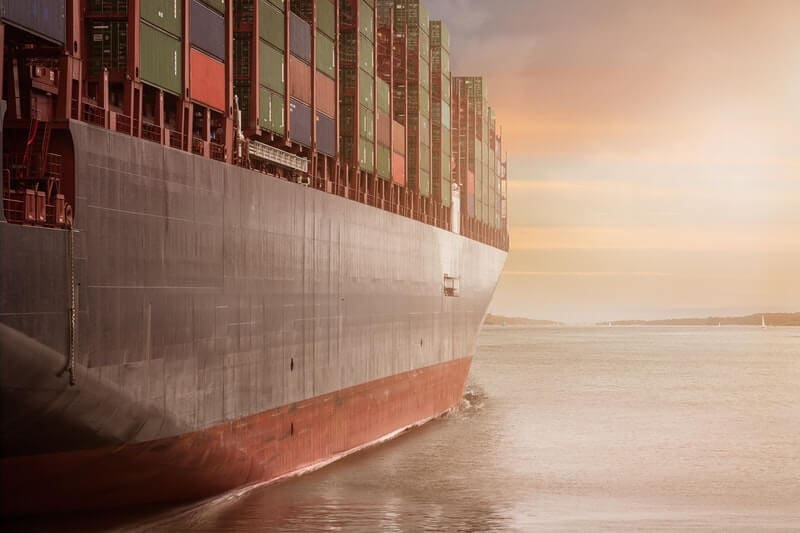The supply chain is a complex series of processes that all work together to create a seamless stream of connections from producer to consumer. And depending on where the materials are coming from, this can be a long chain. Many of our materials and goods from companies that are outsourcing transport operations are imported from other countries.
The best way for these materials to travel is to be shipped together in the largest groupings possible. As you can probably imagine, these large groupings of various shipping containers grow to be quite heavy—much heavier than what can be loaded onto a plane.
This is why container ships are frequently used to transport goods and materials from one country to another. The items are loaded into shipping containers that can be transported by semi-trucks. These containers are compiled onto a container ship which brings it across the ocean to one of the US ports.
The east coast and Gulf coast have a handful of major ports to receive these goods. But the west coast only has two major ports—one in Los Angeles and one in Long Beach, California. These ports are mostly responsible for receiving ships from Asia, which is a major supplier of goods for a large number of US companies that outsource transport operations.
This is a major point of connection for the supply chain in the US. However, growing fears and concerns relating to the spread of infectious disease threaten to close off the borders of our country from visitors as well as goods. And one of the main points of connection for these goods are the ports.
And even though it’s hypothetical at this point, it’s still a good exercise to illustrate just how important these points actually are. So, what would happen if these ports were to close?
Visit M&W Logistics to learn more about outsourcing transport operations.
Supply Chain Clogs
Container ships are constantly moving back and forth across the world’s oceans. Goods are coming from various companies in various areas of various countries. And as the producers, it’s in their best interest to fulfill their orders as quickly and thoroughly as they can. The producers know what their customers want so they put the orders together, ship them out, and get to work on the next order.
We bring this up to illustrate that the flow of goods coming in is constant. These container ships are getting filled and sent to their destination, often long before they actually arrive at there.
Closing the ports means these ships don’t have a place to offload their supplies. Usually, they offload the materials, load on new materials, and go back to their original place of departure. But if they can’t offload their materials, they simply sit in the harbor and wait for their turn.
This is effectively the same as kinking a hose, and it has a ripple effect on the resulting processes of the supply chain.
Local Inventory Drops
Local businesses are the ultimate destination for these goods. Your local shops and stores stock materials that often come from other parts of the world. You might see the trucks carrying goods and being offloaded at the store, but many don’t realize how far these materials have come. Many of them were at one time loaded onto and off of a container ship.
But if these ships aren’t allowed to offload their materials, they won’t make it onto the truck that eventually visits the store in your town. There are intermediate steps such as warehousing, but the destination won’t be reached if the materials don’t make it through every step along the way.
The average consumer will see the result of this by not being able to find the materials they are looking for. Store supplies drop and consumer demand increases. This can lead to an increase in price for these materials.
Economy Slows
The materials and goods that come through the ports represent a large section of our country’s economy. The sales generated from these shipments provide a lot of money.
We don’t have to completely estimate how this would impact the economy, we can look at recent history.
The California ports experienced a strike as recently as 2015. This didn’t completely shut down the ports, but it slowed progress to a crawl over the course of a few months. This started many to speculate as to what the economic result would be if the ports closed altogether.
Marketwatch reported that a 20-day stoppage would cost the economy about $50 billion, which equates to around $2.5 billion each day. And as this was five years ago, inflation would mean these numbers would be even higher today.
The ports are incredibly important to our country’s supply chain. Blocking this off as a way to stem the possibility of spreading a contagious virus would be incredibly detrimental to our economy.

